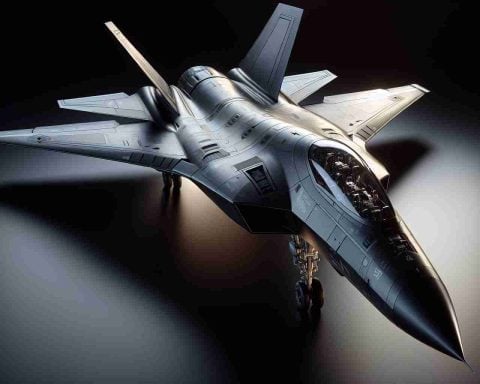The F-35 fighter jet, known for its cutting-edge technology and versatility, is often spotlighted for its striking features, but it’s the pilot’s helmet that truly steals the show with its astonishing price tag. Costing upwards of $400,000, this helmet is more than just headgear—it’s an integral part of the aircraft’s advanced systems.
The Gen III Helmet Mounted Display System is engineered by Rockwell Collins and Elbit Systems. It provides the pilot with unmatched situational awareness, offering data straight onto the helmet’s visor. This includes vital information such as speed, altitude, and targeting, projected directly into the pilot’s line of sight. Essentially, it allows the pilot to see through the aircraft using an array of high-tech sensors mounted on the jet’s exterior.
One of the standout features of this helmet is its ability to provide a 360-degree view of the aircraft’s surroundings. It achieves this through advanced augmented reality capabilities, which compile and integrate live video feeds from six sensors positioned around the plane, creating a seamless panoramic view. This system ensures that F-35 pilots can maintain complete spatial orientation, even in the most complex combat scenarios.
Moreover, each helmet is custom tailored to the individual pilot, ensuring not only maximum comfort but also precise functionality. Measuring and fitting involve a sophisticated process to perfectly align the optical systems with each pilot’s eyes, which adds to the steep production costs.
In terms of modern military aviation, the F-35’s helmet is an intersection of innovation and capability, embodying the transformation of traditional flight gear into a powerful asset that enhances both pilot performance and mission success.
The Mind-Blowing Tech Behind the F-35 Pilot Helmet: What You Didn’t Know
The F-35 fighter jet’s astonishing helmet system isn’t just an engineering marvel—it’s a glimpse into the future of technology integration, impacting human development and innovation in various sectors.
Beyond Military Technology: Wider Implications
The Gen III Helmet Mounted Display System is not only revolutionizing military aviation but also influencing civilian technological advancements. Its capability to provide enhanced situational awareness through augmented reality (AR) foreshadows applications in fields such as medicine, where surgeons could one day use similar AR systems for complex procedures.
Questions of Cost and Controversy
Why is this helmet so expensive? Beyond its AR functionality, these helmets are custom-tailored for each pilot, akin to a tailored suit, but with life-saving technological capabilities. This high degree of customization significantly inflates the cost. As military budgets swell for technological edge, questions about financial efficiency and resource allocation arise.
Advantages vs. Disadvantages
One huge advantage is unmatched situational awareness. Pilots benefit from data projected directly onto their visor, allowing them to remain aware without being distracted. However, the steep $400,000 price tag sparks debates on cost-effectiveness. Could these resources be better spent elsewhere in the military or public sectors?
Future Applications and Links
While revolutionary, the F-35 helmet system hints at a future where augmented reality impacts everyday life. In industries beyond defense, innovations like this could spearhead novel technological applications. For more insights into such emerging technologies, explore Lockheed Martin’s development projects.
In a world where technology rapidly changes our landscape, the F-35 helmet stands as a testament to human innovation, sparking conversations about its potential and necessity across multiple spheres.















